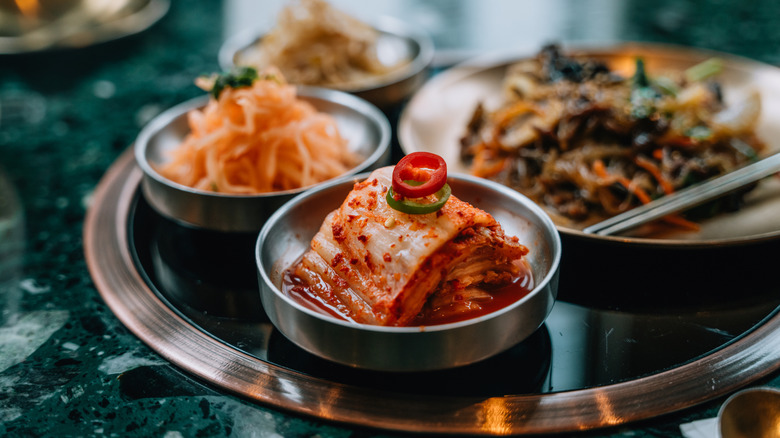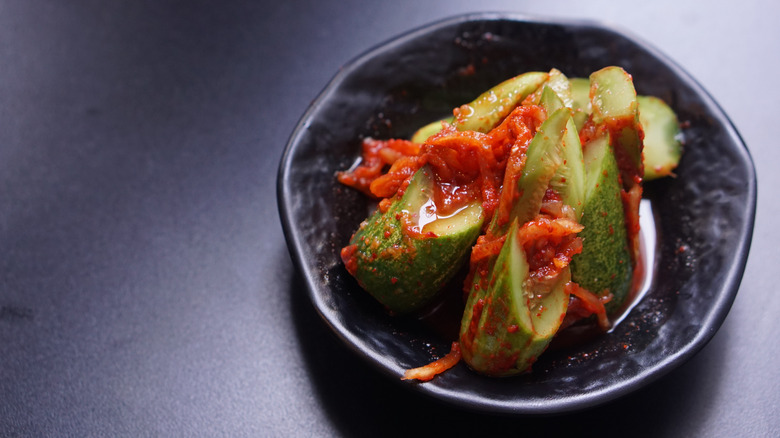The Underrated Kimchi Varieties You Need To Try According To An Expert
If you've ever eaten any type of Korean food, you're probably at least passingly familiar with kimchi, the iconic fermented vegetable dish. However, unless you have a deeper knowledge of Korean cuisine, you might not know that kimchi doesn't just refer to the classic Napa cabbage variety flavored with gochugaru chili flakes. It actually encompasses any and all salted and fermented vegetables, and the spicy cabbage Americans are most familiar with is technically called tongbaechu kimchi
Since there's a bewildering amount of varieties of kimchi available, to learn what some of them are and how you can try them Chowhound spoke exclusively with Sungchul Shim, the chef and owner of Kochi and Mari in New York City. Both Michelin-starred, fine-dining tasting restaurants use unique types of kimchi in creative ways on their inventive menus.
Shim suggested a few styles of kimchi for new enthusiasts to try. Beginners, he says, will love Kkaennip, a perilla leaf kimchi, because it's "quick and easy." Oi Sobagi, stuffed cucumber kimchi, is "fresh and crunchy," and "ideal for summer," he says. To those eager for something a little different, Shim recommends Chonggak Kimchi, ponytail radish kimchi (named for the shape of their greens), which he called "earthy and unique." Both the greens and the radish itself are used in this version of kimchi.
How to try these unique kimchi varieties for yourself
If you prefer to outsource your specialty kimchi preparation to the professionals, you could try local Korean restaurants (pay special attention to the banchan, which are side dishes) or Asian supermarkets like H Mart, for ready-made versions. But if you're ready to start making unique kimchi at home, Sungchul Shim says, the three types of kimchi he mentioned "often require less time and effort [to make] compared to tongbaechu." For best results, Shim recommends home cooks "always use fresh, high-quality ingredients to bring out their flavors."
Kkaennip kimchi is made using perilla leaves, which have a fragrant, minty flavor. It's quick to make because the kimchi paste does most of the work of "fermenting" the leaves — all you have to do is spread the paste (made with some combination of ingredients that probably include fish sauce, sugar, and gochugaru) over the leaves, and seal them in an airtight container for a few hours at room temperature before they're ready to eat.
Oi Sobagi is similarly fast to whip up because you are essentially dry pickling rather than fermenting the cucumbers with salt before stuffing them with vegetables and kimchi seasoning. It can be served immediately or left out to ferment before refrigerating. Unlike the other varieties, chonggak kimchi does require some more time to ferment the salted radishes in a kimchi paste made with glutinous rice porridge. But after a couple days of fermentation, this kimchi can be enjoyed for several weeks.

